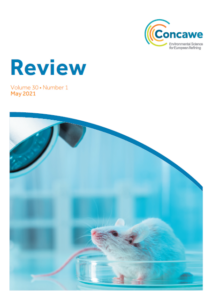Concawe Review 30.1
 The European Green Deal tackles all aspects of our industry, and it is no surprise that all of the articles in this edition of the Concawe Review are related to it.
The European Green Deal tackles all aspects of our industry, and it is no surprise that all of the articles in this edition of the Concawe Review are related to it.
In light of the zero pollution action plan and the proposed revision of the air quality standards, the first article evaluates the feasibility and the level of success of current and projected compliance concerning ozone, a secondary pollutant formed and removed via complex chemical reactions. In the second article, the author analyses how the lockdown measures implemented in 2020 to counter the spread of the SARS-CoV-2 virus have impacted air quality in selected European cities.
The European Commission is currently finalising its plan to achieve a 55% reduction in greenhouse gas (GHG) emissions by 2030. In this context, the third article summarises a Concawe Report which provides an outlook for the transport sector, modelling the evolution of different powertrains and the availability of different alternative fuels. With the growing and rapid electrification of passenger cars, some uncertainty has arisen as to whether the capacity for battery production will be able to meet the demand. The fourth article explores the optimal passenger car sales composition (internal combustion engines, hybrid electric vehicles, plug-in hybrid electric vehicles and battery electric vehicles) for minimising well-to-wheels GHG emissions as a function of battery production capacity available in 2030.
The two last articles relate to the Green Deal toxic-free environment and the REACH legislation. The correct evaluation of the persistence of our products in the environment is key to correctly evaluating their potential to do harm, and is part of the evaluation under REACH. The fifth article refers to a study, and a paper published in a peer-reviewed scientific journal, showing that temperature correction for historical biodegradation simulation tests should be hydrocarbon-specific, rather than follow a generic default correction as currently addressed in the ECHA guidance. The REACH regulation also promotes alternative methods to animal testing for the hazard assessment of substances. The final article summarises the achievements reached under Concawe’s important Cat-App project, which aims to reduce the amount of animal testing required for hazard evaluation of our substances thanks to the identification of biological similarity through innovative in-vitro testing, high-throughput genomics and integrative data analyses.